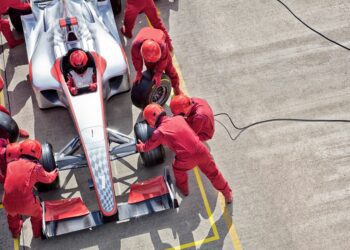BCG assesses the global response to the novel coronavirus—and what governments can still do to contain the spread, as it is indeed late, but not too late.
In many countries around the world, restarting the economy while also fighting the coronavirus has turned into a protracted and arduous slog. Some countries that seemed to be on the cusp of decisively controlling the virus, such as Germany, have recently experienced new outbreaks and hot spots. Others, such as the US, are seeing a rapid rise in infection and hospitalization levels that may signal uncontrolled virus transmission. Both situations have forced select national and regional governments to delay reopening schedules and, in some cases, reimpose targeted lockdowns.
A small subset of governments, mainly in the Asia-Pacific region, have been able to do things differently. Early in the pandemic, these governments were able to decisively contain the spread of the coronavirus, and a few are on the path to total elimination. For example, in early June, New Zealand’s government announced that the country no longer had any active coronavirus cases. Although New Zealand has reported a few new cases since then—mainly due to breakdowns in its strict quarantine rules for travelers from abroad—infection levels remain miniscule, allowing the economy to reopen and people to live and work much like they did before the outbreak. Other governments that largely contained the virus in the first phase of the pandemic include those of Australia, China (after the initial outbreak in the province of Hubei), South Korea, and Taiwan.
These governments have taken what we refer to as a crush-and-contain approach, which has proven the most effective strategy for combating the coronavirus. This approach has resulted in the best health outcomes in terms of preventing virus transmission, and evidence suggests that it minimizes the economic costs of the pandemic. After all, the sooner a country can limit the spread of the virus after it first appears, the shorter the period that the economy will be frozen, and the sooner people can get back to work. BCG’s modeling estimates that the cost of a successful crush-and-contain strategy is dramatically less—approximately 30% to 40% less—than other approaches to fighting the disease.
For politicians and policymakers in the rest of the world, however, the critical question is this: Does crush and contain remain a viable strategy today for governments that were unable to contain the spread of infection in the early phase of the pandemic? Or is it simply too late?
We believe that the crush-and-contain strategy is not only viable, but also more relevant than ever. It is indeed late, but it is not too late. It is becoming increasingly clear that despite the focus on reopening the economy, there is no sustainable path to reviving consumer spending and safely putting people back to work unless the virus can be contained. What’s more, our research and modeling show that governments can successfully crush and contain the virus—even when their societies are already experiencing high levels of spread—at a lower cost than they could pursue other, less aggressive approaches.
Crush-and-contain
Crush and contain isn’t just a strategy, it is a dynamic system with four interlinked imperatives:
- Take a more rigorous approach to lockdowns. After nearly seven months of sustained economic pain, no one welcomes further lockdowns. And yet, in many parts of the world, lockdowns are once again on the agenda. The imperative is to make them effective. In order to crush the spread of infection, lockdowns must be extremely strict and have high levels of compliance. Fortunately, the more effective a lockdown is at reducing contact, the shorter it needs to be, and the less it will hurt the economy. We estimate that if a lockdown is strict enough to reduce social contact by 80% from prepandemic levels, it can decisively crush infection transmission in five to eight weeks, depending on the current level of infection.
- Take a more targeted approach to virus monitoring. A comprehensive virus monitoring system, including widespread testing and tracing, is critical for containment. But testing and tracing is most effective at the very beginning of a pandemic and once it is successfully crushed. When infection levels are already high, virus transmission will quickly outpace the ability of societies to track it. In such situations, testing and tracing need to be carefully targeted toward the most vulnerable segments of society, not only to save the lives of those most threatened by COVID-19, but also because doing so is the best way to reopen society safely.
- Take a more customized approach to reopening guidelines. As a society begins to reopen, governments must combine general protocols for safer interactions, such as requiring that people wear masks, with additional guidelines that are carefully customized to the unique circumstances and risks of different economic sectors and population segments. Our modeling suggests that by instituting custom guidelines for safe interactions, governments can reduce the expected peak infection level in some economic sectors by an additional 85% on top of what can be achieved by using general practices alone.
- Enact stronger policies to protect the containment border. Finally, governments must develop the capacity to protect the borders of containment zones in which the crush-and-contain strategy is being implemented. As important as policies are to ensure biosecurity at the national frontier, so too are policies that protect borders of a specific region, state, or metropolitan area—as well as those that protect the borders separating the especially vulnerable population from the general one. Indeed, the best way forward for many societies is to progressively implement a crush-and-contain strategy in regions of the country or for segments of society where the need is greatest.
Many governments missed the opportunity to crush the coronavirus in the early phase of the pandemic. They should prepare now to make sure they don’t miss the opportunity yet again.
Should it neglect any of these imperatives, a government is likely to become trapped in a suboptimal equilibrium in which uncontained transmission will continuously undermine the restarting of the economy, leading to significantly higher costs in terms of human lives and economic destruction that will happen in successive waves.












